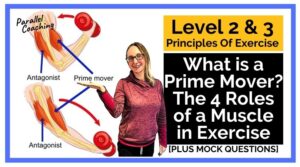


All four muscles are the key extensors of the lower leg at the knee joint and also stabilize and protect the patella. Quadriceps Femoris: The quadriceps femoris is actually composed of four muscles that comprise the front of the thigh: three deep-lying vastus muscles (lateralis, intermedius, and medialis) and the rectus femoris which covers them.Actions: Flexing of the lower leg at the knee joint.Attachments: Originates from the pelvis and attaches to the tibia.Sartorius: The sartorius, a thin muscle in the thigh, the is the body’s longest muscle.The pectineus and iliopsoas muscles are responsible for movement at the hip and are discussed elsewhere. There are four muscles in anterior region of the thigh.

Posterior view of muscles of the lower leg, the popliteus can be seen at the top located behind the knee. (a) Posterior muscles of the thigh and (b) posterior region of the lower leg: The biceps femoris and synergistic semitendinosus and the semimembranosus muscles are responsible for flexing of the lower leg at the knee. The popliteus muscle, located in the lower leg, is responsible for “unlocking” the knee joint after extension. Muscles that generate movement across the knee are mainly located in the thigh and can be split into anterior and posterior compartments. The patellofemoral has two key functions: increasing leverage of the quadriceps tendon to improve muscle stability and protecting the knee joint from damage. The patella additionally protects the knee joint from damage. This increases the leverage afforded to the quadriceps femoris muscle, thus increasing its efficiency when extending the lower leg. The patella is the attachment point for the quadriceps femoris muscle and is the attached by a ligament to the tibia. When the knee is fully extended the femur rotates slightly on the tibia to lock the joint into place, allowing for efficient load bearing. The tibiofemoral joint is relatively weak and easily damaged, so it relies on muscles and ligaments to ensure stability. The knee joint is in fact comprised of two joints: the tibiofemoral joint between the femur and tibia, which is the weight-bearing knee joint, and the patellofemoral joint, which joins the patella (kneecap) with the femur. The knee joint allows for movement of the lower leg relative to the thigh across the knee joint. popliteus: A muscles located behind the knee which “unlocks” the fully extended knee joint allowing for flexion.quadriceps femoris: A group of four muscles found in the anterior region of the thigh, responsible for extension of the lower leg at the knee.hamstring group: A group of three muscles found in the posterior region of the thigh, responsible for flexing of the lower leg at the knee.Raise your eyebrows as if you were surprised and lower your eyebrows as if you were frowning.\) Place your finger on your eyebrows at the point of the bridge of the nose. There are several small facial muscles, one of which is the corrugator supercilii, which is the prime mover of the eyebrows. This muscle allows you to whistle, blow, and suck and it contributes to the action of chewing. The majority of the face is composed of the buccinator muscle, which compresses the cheek. The physicians originally studying human anatomy thought the skull looked like an apple. Instead, the two bellies are connected by a broad tendon called the epicranial aponeurosis, or galea aponeurosis (galea = “apple”). In other words, there is a muscle on the forehead ( frontalis) and one on the back of the head ( occipitalis), but there is no muscle across the top of the head. The muscle has a frontal belly and an occipital (near the occipital bone on the posterior part of the skull) belly. The occipitofrontalis muscle moves up the scalp and eyebrows. The orbicularis oris is a circular muscle that moves the lips, and the orbicularis oculi is a circular muscle that closes the eye. (Image credit: "Front and Side Views of the Muscles of Facial Expressions" by Openstax is licensed under CC BY 4.0)
Prime mover muscle skin#
Many of the muscles of facial expression insert into the skin surrounding the eyelids, nose and mouth, producing facial expressions by moving the skin rather than bones.


 0 kommentar(er)
0 kommentar(er)
